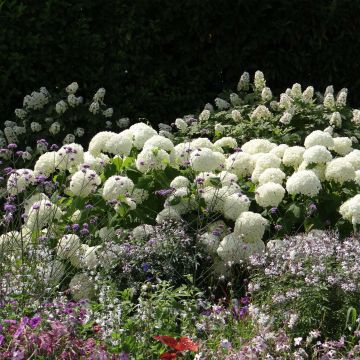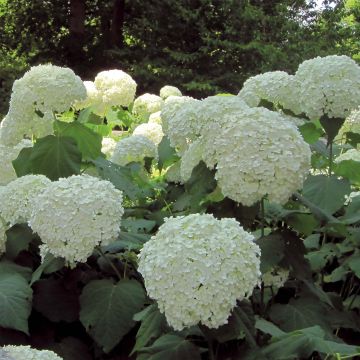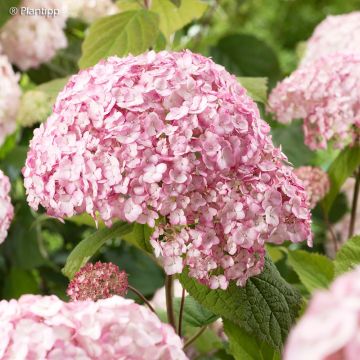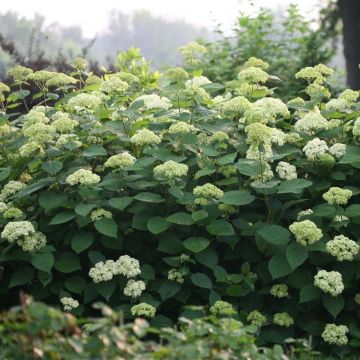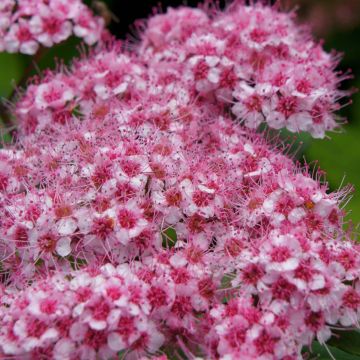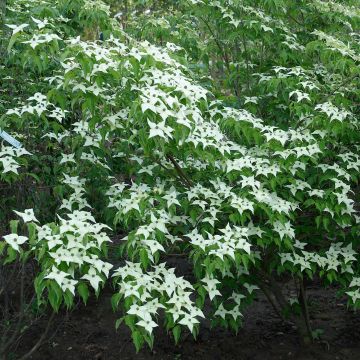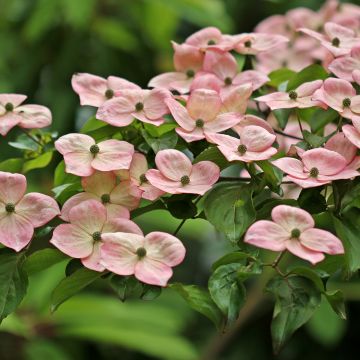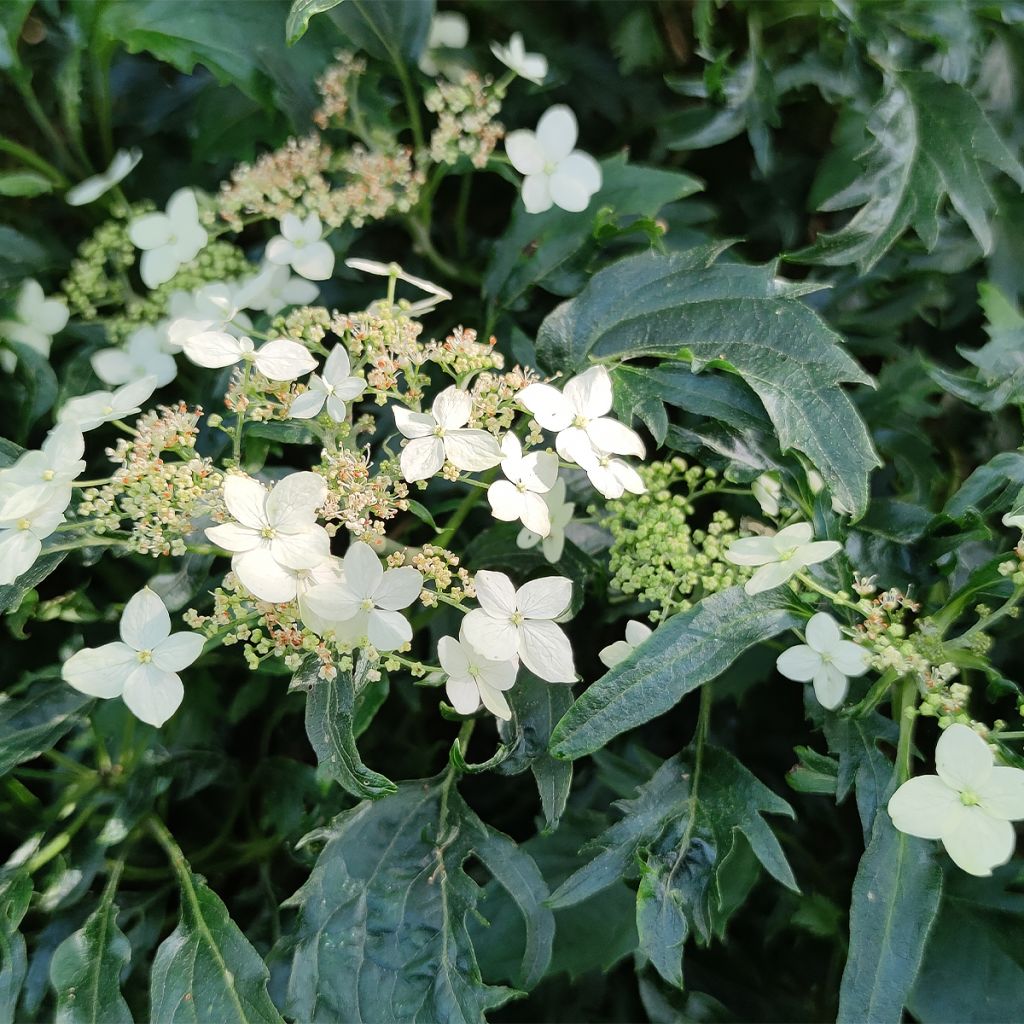

Hortensia - Hydrangea arborescens Emerald lace


Hortensia - Hydrangea arborescens Emerald lace


Hortensia - Hydrangea arborescens Emerald lace
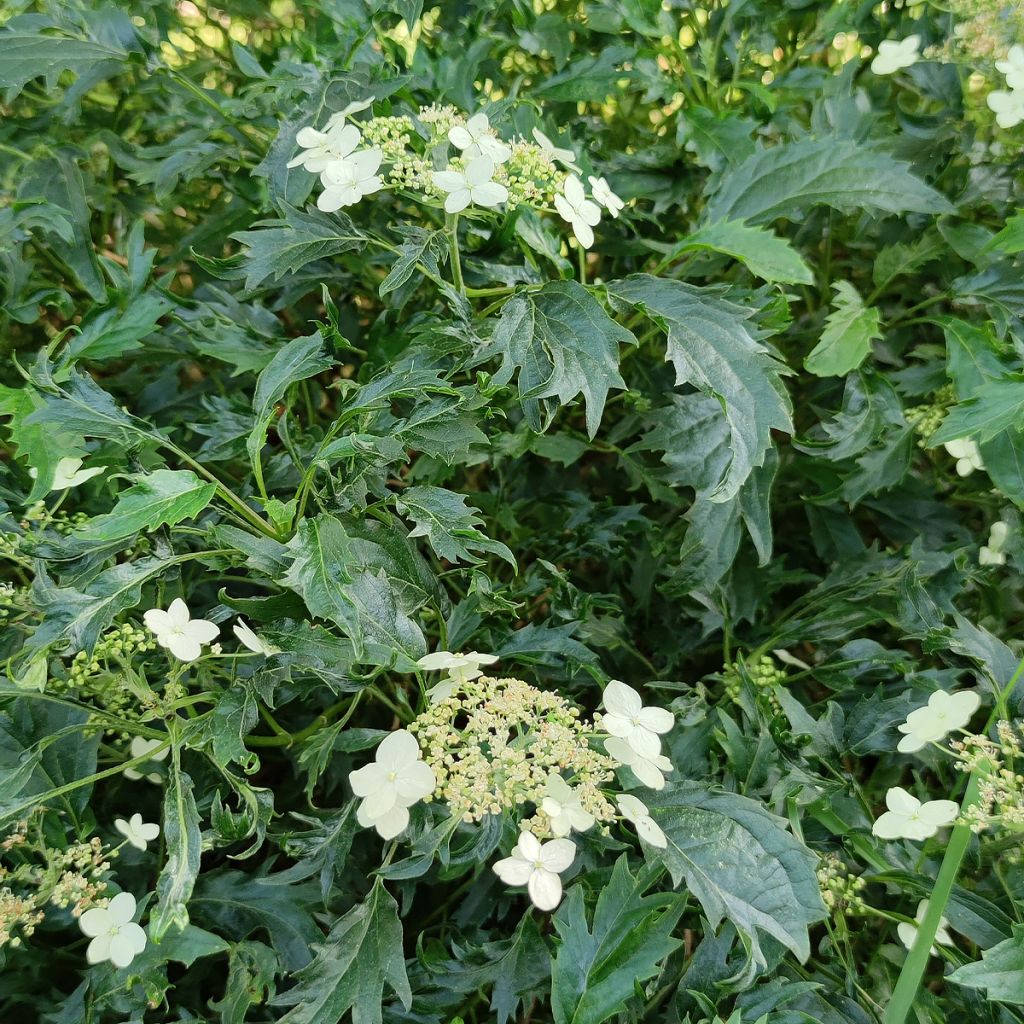

Hortensia - Hydrangea arborescens Emerald lace


Hortensia - Hydrangea arborescens Emerald lace
Hydrangea arborescens Emerald lace
Hydrangea arborescens Emerald lace
Smooth Hydrangea, Wild Hydrangea, Sevenbark
Why not try an alternative variety in stock?
View all →This plant carries a 24 months recovery warranty
More information
We guarantee the quality of our plants for a full growing cycle, and will replace at our expense any plant that fails to recover under normal climatic and planting conditions.
From €5.90 for pickup delivery and €6.90 for home delivery
Express home delivery from €8.90.
Does this plant fit my garden?
Set up your Plantfit profile →
Description
Hydrangea arborescens 'Emerald Lace' is much less known than its relative 'Annabelle', which it surpasses with its resistance to hot exposures, and by its delightful originality. Its maple or oak foliage is unique, and its flowering in large fluffy pale green panicles becoming white lacks neither elegance nor finesse. Of medium size, perfectly hardy, less demanding in terms of soil than most varieties, this hydrangea is suitable for gardens of all styles, of any size, and it will adapt to many regions.
'Emerald Lace', sometimes marketed under the names 'Riven Lace' or 'Green Dragon', is full of surprises. The plant was discovered in 1990 by Stan Tyson, in Illinois in the United States. Of fairly rapid growth, this cultivar forms a bush of about 1.3m (4ft) in height and 1m (3ft) in width at maturity. Its habit is sometimes irregular, requiring pruning for the first two years. Its unique foliage is almost palmate; the leaves have very cut edges. A beautiful emerald green in summer, they turn yellow in autumn before falling. The flowering spreads from June to August and the inflorescences form on the current year's branches. They are large corymbs that can measure up to 15cm (6in) in diameter. Each is made up of a multitude of tiny fertile flowers surrounded by a crown of more developed sterile florets, with 3 or 4 petals. The inflorescence is slightly washed with green and cream at flowering, it becomes white at maturity. The slightly fragrant flowering is melliferous.
'Emerald Lace' is versatile. It suits natural gardens. It will bring a touch of poetry to romantic styles. It is perfect in simple white and green themes. It illuminates under partial shade, an effect that will be enhanced if it is planted in a group of three. At its base, create a variegated ground cover composed of Caucasian forget-me-nots, small periwinkles, or variegated ground ivy. In a city garden, it brings refinement and distinction. Surround it with hellebores, daffodils, and pansies, which extend the flowering and complete the range of whites.
Report an error about the product description
Hydrangea arborescens Emerald lace in pictures
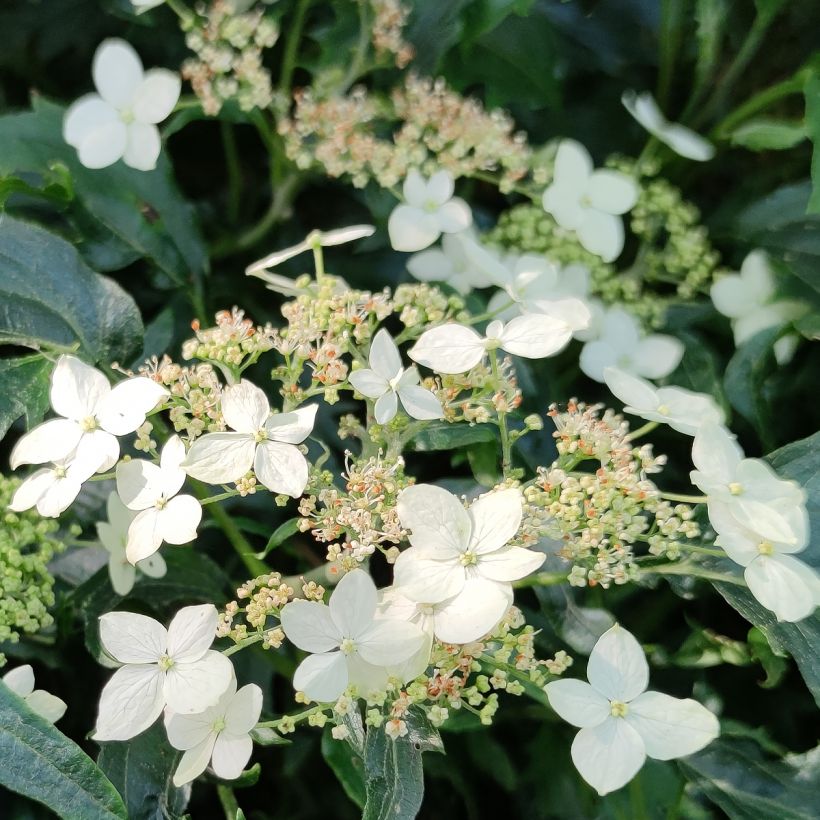





Plant habit
Flowering
Foliage
Botanical data
Hydrangea
arborescens
Emerald lace
Hydrangeaceae
Smooth Hydrangea, Wild Hydrangea, Sevenbark
North America
Other Hydrangea arborescens
Planting and care
Plant in spring or in autumn under light shade or in the sun. It prefers cool, moist, neutral soils, but also accepts poorer soils with a slight limestone tendency. It will adapt to any garden soil that is sufficiently loose and deep as long as it is not excessively limestone. This variety does not tolerate summer drought very well.
Plant it in deeply worked soil. A good base fertiliser (horn or dehydrated blood) will promote the establishment of your plant and nourish it without risk of burning. If your soil tends to be dry, mix our water retainer, stockosorb, with the soil when filling in the planting hole and plan for a watering basin on the surface.
The plant is perpetual, so you can remove the wilted flowers regularly in the summer.
'Emerald Lace' can be severely pruned in autumn, as this variety will flower on new shoots. The branches can be pruned short (all shoots, branches, twigs) to about 15cm (6in) from the soil each year.
Planting period
Intended location
Care
This item has not been reviewed yet - be the first to leave a review about it.
Summer-flowering shrubs
Haven't found what you were looking for?
Hardiness is the lowest winter temperature a plant can endure without suffering serious damage or even dying. However, hardiness is affected by location (a sheltered area, such as a patio), protection (winter cover) and soil type (hardiness is improved by well-drained soil).

Photo Sharing Terms & Conditions
In order to encourage gardeners to interact and share their experiences, Promesse de fleurs offers various media enabling content to be uploaded onto its Site - in particular via the ‘Photo sharing’ module.
The User agrees to refrain from:
- Posting any content that is illegal, prejudicial, insulting, racist, inciteful to hatred, revisionist, contrary to public decency, that infringes on privacy or on the privacy rights of third parties, in particular the publicity rights of persons and goods, intellectual property rights, or the right to privacy.
- Submitting content on behalf of a third party;
- Impersonate the identity of a third party and/or publish any personal information about a third party;
In general, the User undertakes to refrain from any unethical behaviour.
All Content (in particular text, comments, files, images, photos, videos, creative works, etc.), which may be subject to property or intellectual property rights, image or other private rights, shall remain the property of the User, subject to the limited rights granted by the terms of the licence granted by Promesse de fleurs as stated below. Users are at liberty to publish or not to publish such Content on the Site, notably via the ‘Photo Sharing’ facility, and accept that this Content shall be made public and freely accessible, notably on the Internet.
Users further acknowledge, undertake to have ,and guarantee that they hold all necessary rights and permissions to publish such material on the Site, in particular with regard to the legislation in force pertaining to any privacy, property, intellectual property, image, or contractual rights, or rights of any other nature. By publishing such Content on the Site, Users acknowledge accepting full liability as publishers of the Content within the meaning of the law, and grant Promesse de fleurs, free of charge, an inclusive, worldwide licence for the said Content for the entire duration of its publication, including all reproduction, representation, up/downloading, displaying, performing, transmission, and storage rights.
Users also grant permission for their name to be linked to the Content and accept that this link may not always be made available.
By engaging in posting material, Users consent to their Content becoming automatically accessible on the Internet, in particular on other sites and/or blogs and/or web pages of the Promesse de fleurs site, including in particular social pages and the Promesse de fleurs catalogue.
Users may secure the removal of entrusted content free of charge by issuing a simple request via our contact form.
The flowering period indicated on our website applies to countries and regions located in USDA zone 8 (France, the United Kingdom, Ireland, the Netherlands, etc.)
It will vary according to where you live:
- In zones 9 to 10 (Italy, Spain, Greece, etc.), flowering will occur about 2 to 4 weeks earlier.
- In zones 6 to 7 (Germany, Poland, Slovenia, and lower mountainous regions), flowering will be delayed by 2 to 3 weeks.
- In zone 5 (Central Europe, Scandinavia), blooming will be delayed by 3 to 5 weeks.
In temperate climates, pruning of spring-flowering shrubs (forsythia, spireas, etc.) should be done just after flowering.
Pruning of summer-flowering shrubs (Indian Lilac, Perovskia, etc.) can be done in winter or spring.
In cold regions as well as with frost-sensitive plants, avoid pruning too early when severe frosts may still occur.
The planting period indicated on our website applies to countries and regions located in USDA zone 8 (France, United Kingdom, Ireland, Netherlands).
It will vary according to where you live:
- In Mediterranean zones (Marseille, Madrid, Milan, etc.), autumn and winter are the best planting periods.
- In continental zones (Strasbourg, Munich, Vienna, etc.), delay planting by 2 to 3 weeks in spring and bring it forward by 2 to 4 weeks in autumn.
- In mountainous regions (the Alps, Pyrenees, Carpathians, etc.), it is best to plant in late spring (May-June) or late summer (August-September).
The harvesting period indicated on our website applies to countries and regions in USDA zone 8 (France, England, Ireland, the Netherlands).
In colder areas (Scandinavia, Poland, Austria...) fruit and vegetable harvests are likely to be delayed by 3-4 weeks.
In warmer areas (Italy, Spain, Greece, etc.), harvesting will probably take place earlier, depending on weather conditions.
The sowing periods indicated on our website apply to countries and regions within USDA Zone 8 (France, UK, Ireland, Netherlands).
In colder areas (Scandinavia, Poland, Austria...), delay any outdoor sowing by 3-4 weeks, or sow under glass.
In warmer climes (Italy, Spain, Greece, etc.), bring outdoor sowing forward by a few weeks.

































